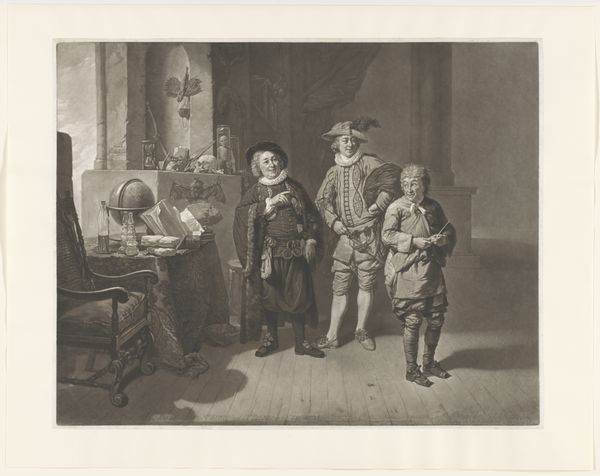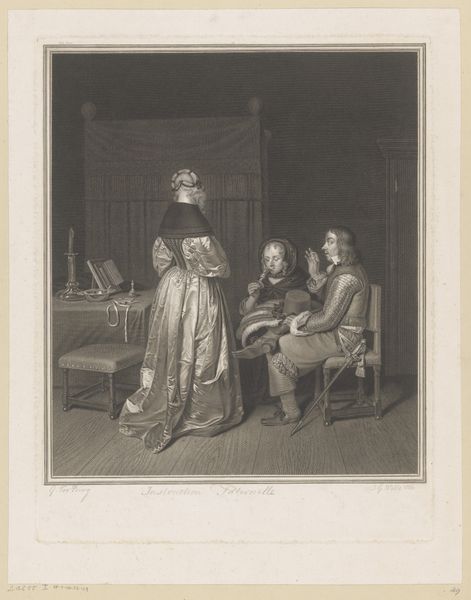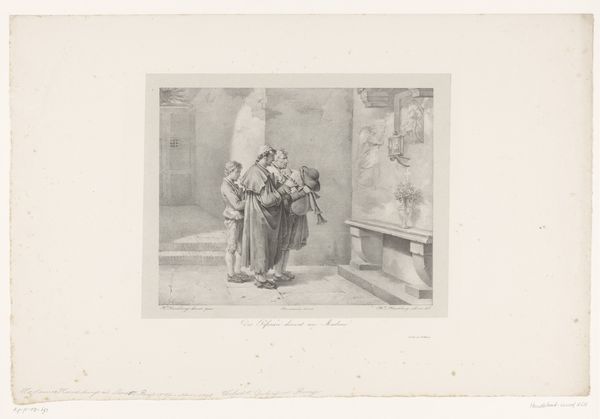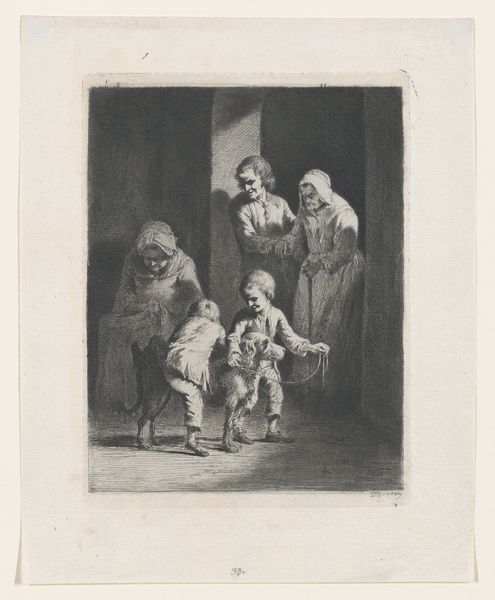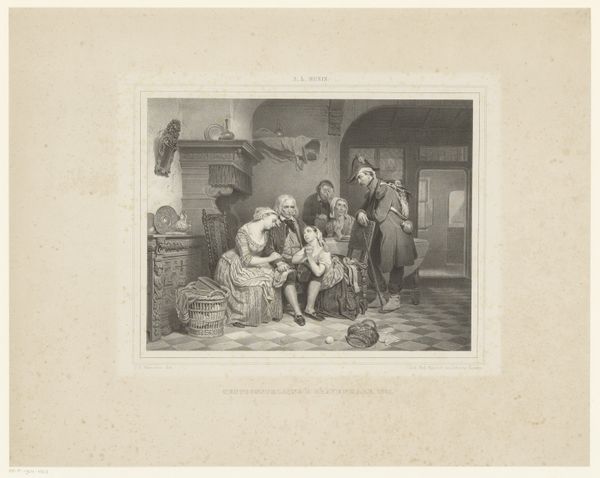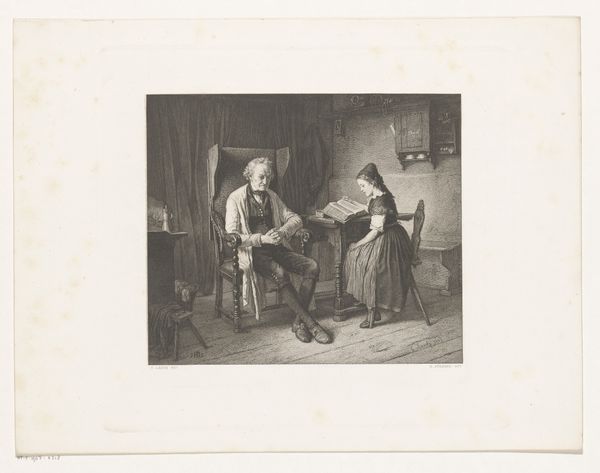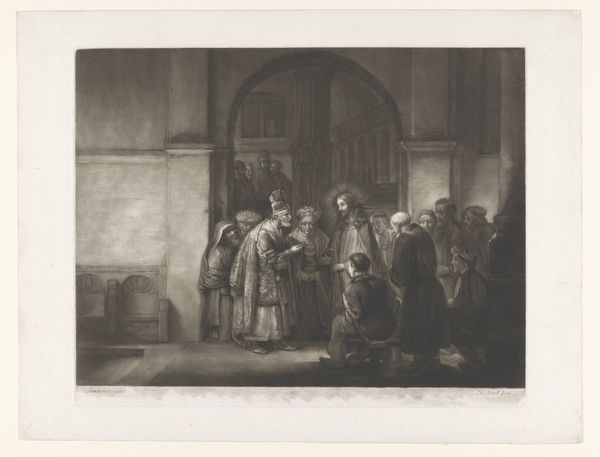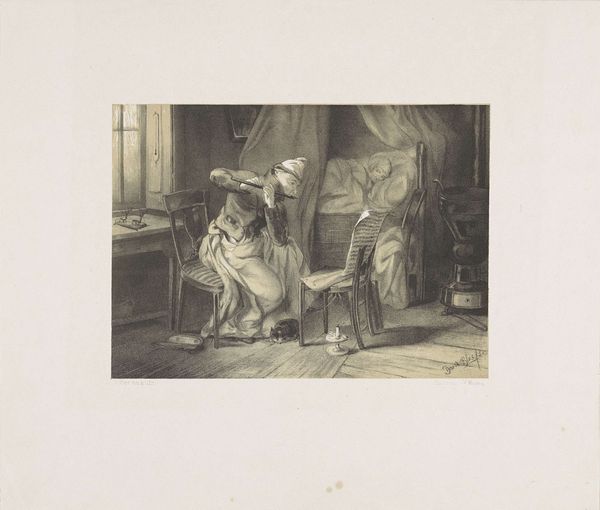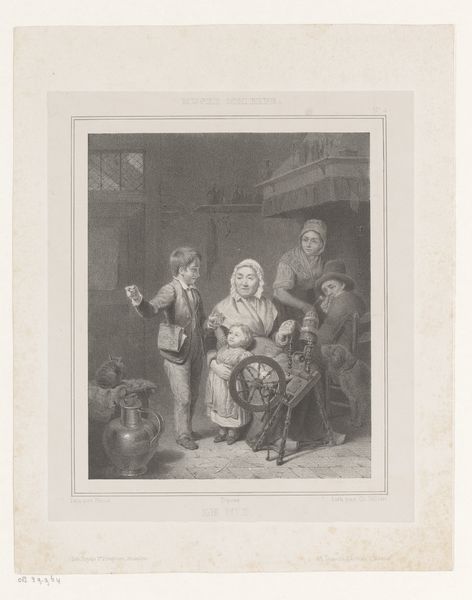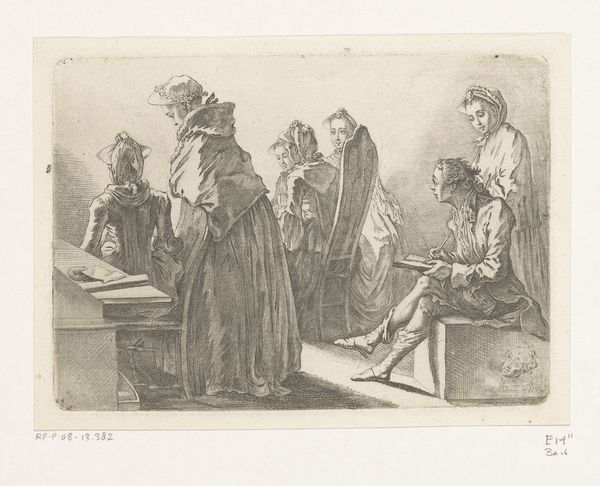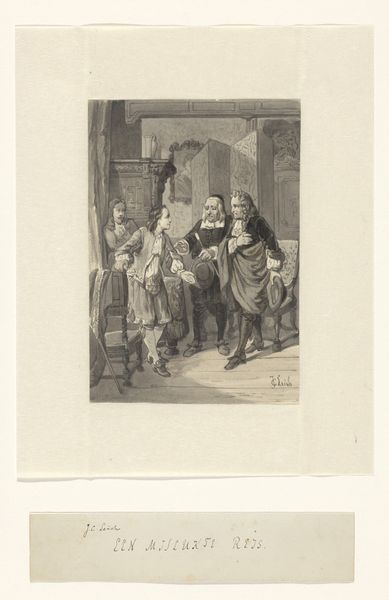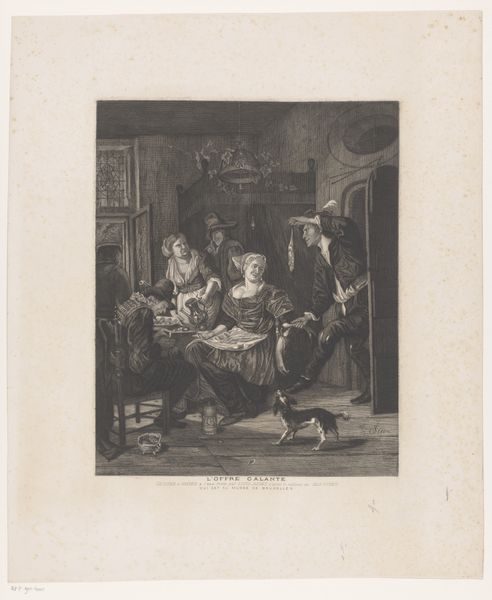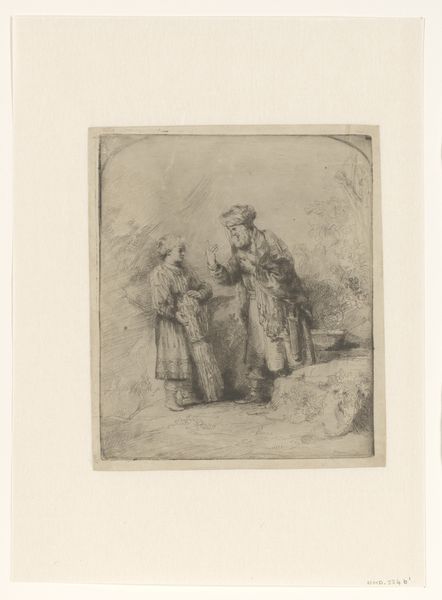
Dimensions: height 445 mm, width 530 mm
Copyright: Rijks Museum: Open Domain
Editor: Here we have Jonathan Spilsbury's engraving, "Abraham Expelling Hagar and Ishmael," made sometime between 1752 and 1794. It has a strong narrative feel. What's striking is the overt sadness but the woman’s face almost conveys resolve. What do you see in this piece, particularly its relationship to gender and power? Curator: It’s crucial to examine this through an intersectional lens. On the surface, it's a depiction of Abraham, Sarah, Hagar, and Ishmael from the Bible, but let’s think critically about who holds power here and who is being marginalized. The visual language portrays Hagar, an enslaved person and the mother of Abraham's firstborn son, as disposable. The patriarchal narrative often silences or diminishes the stories of women, particularly women of color or those of lower social status. Editor: That's a really interesting way of framing it. So the sadness I see isn’t necessarily just about leaving but about the injustice embedded within the situation itself. Curator: Exactly. The image also reinforces the idea of lineage and legitimacy. Sarah's position as the wife and mother of the "chosen" heir solidifies her power, while Hagar and Ishmael are cast out. It’s worth considering the enduring legacy of such narratives and how they continue to impact discussions around race, class, and belonging. How does this piece resonate with contemporary conversations about displacement and identity? Editor: Thinking about current issues like immigration and the struggles of single mothers definitely shifts my understanding of this piece. The story feels a lot less distant. Curator: Precisely! Art history, when examined through a contemporary theoretical framework, allows us to unpack complex power dynamics and engage in meaningful dialogues about social justice. This engraving is more than just a biblical scene; it’s a reflection of deeply ingrained societal biases. Editor: Thank you for guiding me through that. I definitely see this artwork in a new light now, thinking about those broader implications of power and displacement.
Comments
No comments
Be the first to comment and join the conversation on the ultimate creative platform.
